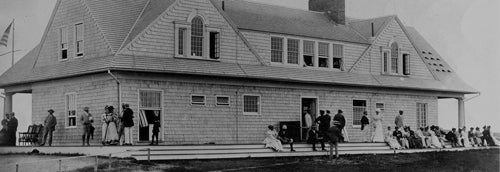A Look at the Storied Traditions of Shinnecock Hills
June 14th kicks off this year's U.S. Open, which returns to Southhampton, New York's gorgeous Shinnecock Hills golf course. Incidentally, and as per usual, the U.S. Open coincides with Father's Day. But that's not what interests us so much. Rather, we thought we'd take a look at the notable history of Shinnecock Hills as the host of this marquee golf event and some of the traditions you might not have known you'd find there.
THE FOUNDING OF THE U.S. OPEN
The U.S. Open was founded in 1895 at the Newport Country Club in Newport, Rhode Island. Since its inception, the tournament has been open to any player, professional or amateur who has a handicap of 1.4 or below and who can successfully qualify for the tournament. Though the field may be large at first (and this year that number was north of 9,000 entries), 156 players eventually qualify to compete for U.S. Open glory. Much like the Super Bowl or the College Football Championships (and unlike the tennis U.S. Open), the location of the U.S. Open rotates each year, making its rounds among the most difficult courses in America. These courses are carefully selected by the USGA, which weighs a multitude of factors, including putting green firmness, course length, variation of the holes, and conditions of the rough.
It did not take long for the famed course at Shinnecock Hills to meet the USGA's stringent criteria. In 1896, the USGA selected Shinnecock to host the second ever U.S. Open, just one year after the tournament's inception. 122 years later it returns again, and with it brings great stories, sights, eats, and hopefully new stories to recount in the years to come.
SHINNECOCK HILLS: THE OLDEST INCORPORATED GOLF CLUB IN THE UNITED STATES

Copyright Shinnecock Hills Golf Club
It started in the late 1800s as an 80-acre parcel of land with noteworthy sand hills adjacent to the Shinnecock Canal in Southhampton, NY. In 1891, that parcel was transformed into a 12-hole golf course and it officially opened as the Shinnecock Golf Club. A year later, it got its famed Clubhouse. And two years after that, it expanded to a full-length 18-hole golf course. Recognized as the oldest incorporated golf club in the U.S., Shinnecock is also one of the five founding members of the USGA.
REPEAT PERFORMANCE
Hosting the second U.S. Open in 1896, Shinnecock Hills set the bar quite high as far as courses go. So much so, in fact, that it has returned many a time, playing backdrop to some of the greatest performances in golf history. Of those who have won, all are great for having won. Yet there are those whose careers may be more recognized than others. James Foulis is remembered for having won in 1986–his only other notable finish was having placed third the year before at the first ever U.S. Open. World Golf Hall of Fame inductee (1989) and winner of several PGA and Senior Tour tournaments, Raymond Floyd was victorious at Shinnecock in 1986.
The U.S. Open returned to Shinnecock again for a third time in 1995, when Corey "Bulldog" Pavin took home the prize. This win was particularly notable as Pavin achieved it during his stretch of 150 weeks (between 1986 and 1997) in the top-10 of the Official World Golf Ranking.
The fourth showing at Shinnecock in 2004 witnessed the dominance of Retief Goosen, who also spent quite some time–over 250 weeks in fact–in the top-10 of the Official World Golf Ranking. His stretch between 2001 and 2007 included both his U.S. Open victories, including one in 2001 and the aforementioned second in 2004 at Shinnecock.
Now, 14 years later, we are back yet again at Shinnecock (as we will be again in 2026), where the weight of golf history hangs so heavily in the air, it's impossible for this year's competitors not to feel it. What's more, the history of intensity that this course boasts–the very intensity that propelled the USGA to choose it over a century ago–has not been lost upon, among others, Phil Mickelson. As he prepared for this year's outing in Southhampton, he noted to the New York Post that "[t]he fairways are a very fair width, the rough is brutal, it will be as penalizing as a hazard, trying to just get it back to the fairway. But the fairways are so wide that a well-struck shot ends up in the fairway. It's not like in the past where you could hit a great drive, get a bad bounce and you have no lie.''
